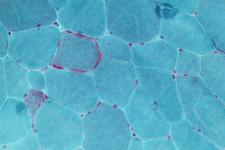Better Mitochondrial Replacement: But Why?
By Ricki Lewis,
PLOS
| 06. 09. 2016
The disconnect was striking between the headline of the news release a few days ago – “Improved method for mitochondrial replacement therapy” – and the title of the paper to which it refers – “Towards clinical application of pronuclear transfer to prevent mitochondrial DNA disease.”
The news release reported changes in the experimental protocol for pronuclear transfer (PNT) a proposed way to prevent mitochondrial disease. Pronuclei house the genomes in egg and sperm. PNT places them into human fertilized ova whose nuclei have been removed, but whose mitochondria remain in the cytoplasm. The intent is to fashion fertilized ova missing the mitochondria from a woman who has a mitochondrial mutation, which she’d know from having a child with one of the dozen or so diseases caused by mutations in mitochondrial genes. (Additional conditions that affect mitochondria result from mutations in genes in the nucleus).
The paper, published yesterday online in Nature, is from Mary Herbert and colleagues at the Wellcome Trust Centre for Mitochondrial Research, Newcastle upon Tyne, United Kingdom.
It’s a clear, concise report of technically elegant and...
Related Articles
By Grace Won, KQED [with CGS' Katie Hasson] | 12.02.2025
In the U.S., it’s illegal to edit genes in human embryos with the intention of creating a genetically engineered baby. But according to the Wall Street Journal, Bay Area startups are focused on just that. It wouldn’t be the first...
Several recent Biopolitical Times posts (1, 2, 3, 4) have called attention to the alarmingly rapid commercialization of “designer baby” technologies: polygenic embryo screening (especially its use to purportedly screen for traits like intelligence), in vitro gametogenesis (lab-made eggs and sperm), and heritable genome editing (also termed embryo editing or reproductive gene editing). Those three, together with artificial wombs, have been dubbed the “Gattaca stack” by Brian Armstrong, CEO of the cryptocurrency company...
Alice Wong, founder of the Disability Visibility Project, MacArthur Genius, liberationist, storyteller, writer, and friend of CGS, died on November 14. Alice shone a bright light on pervasive ableism in our society. She articulated how people with disabilities are limited not by an inability to do things but by systemic segregation and discrimination, the de-prioritization of accessibility, and the devaluation of their lives.
We at CGS learned so much from Alice about disability justice, which goes beyond rights...
By Adam Feuerstein, Stat | 11.20.2025
The Food and Drug Administration was more than likely correct to reject Biohaven Pharmaceuticals’ treatment for spinocerebellar ataxia, a rare and debilitating neurodegenerative disease. At the very least, the decision announced Tuesday night was not a surprise to anyone paying attention. Approval...




